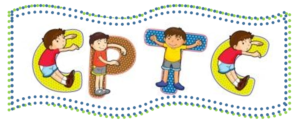We’ve all heard of “going with the flow” and said to ourselves “I can be flexible”. But sometimes it’s easier said than done. Having flexible thinking means having the ability to change plans at the last minute or enter a situation without expectation and be okay with whatever the outcome may be. I don’t know about you, but now is a time more than ever that my own cognitive flexibility has been exercised. With so much unknown, uncertainty, and unchartered territory we’re all having to be flexible and try our best to “go with the flow”. What about our kids? This is hard for many of us as adults, so imagine how hard it may be for children. Especially those that thrive off of predictability and routine.
While routine and structure is important and needed much of the time, life is always going to throw us curveballs, and in order to make it through those times (like now) we have to practice flexible thinking and help our kids learn what that means and to do the same. So, how can we do that?
-
Talk about what it means to be flexible thinkers with your kids. You can compare cognitive flexibility to physical flexibility (stretching, changing body positions, gymnastics, etc.). Just like our body can do things in different ways, our brain can, too! We just have to learn and practice to help our brain be flexible.
-
Think outside of the box! Especially now since we’re spending more time at home, think of ways you can use everyday items for alternative uses. For example, usually we eat with a spoon but see if your child can use it to balance a small object on the spoon as they walk across the room. Or use puzzle pieces for pretend play- make animal noises with zoo puzzles, or play dress up to match Disney character puzzle pieces.
-
Visual schedules: I love visual schedules and they can be incredibly beneficial for many kids. But what happens when something changes at the last minute or there’s an unexpected addition to the schedule one day? Throw in a “wacky” card to add into the visual schedule. The “wacky” card can serve as a visual that’s added to our schedule when something unexpected happens. This allows the child to see how this can still fit into their day and room can be made for it
-
Problem solve! Talk about other ideas, options, or outcomes to situations. Help your child learn about back ups plans and what else they could do when plans go awry.
-
Uh oh! It’s raining outside so we can’t go to the park. What could we do instead? Maybe build a fort at home, make an indoor obstacle course, or play a game.
-
Oh no! The new toy we planned to pick out at the store is sold out. What else could you choose? Or could you wait until it’s back in stock? Give children options so they know there are other solutions.
-
-
Play games. Games are a great, playful way to teach kids flexibility. Especially those games that require waiting, turn taking, sharing, and winning or losing. Candy Land, Chutes and Ladders, and Hi Ho! Cherry-O are examples of games where the situation can change at any time. Players move forward and backward, and the person winning changes multiple times throughout the game.
We all have to be flexible thinkers sometimes no matter what age we are. Just like every other skill, it needs to be practiced. Let’s flex our flexibility by taking the time to help each other work through the unexpected!
Child’sPlay Therapy Center


